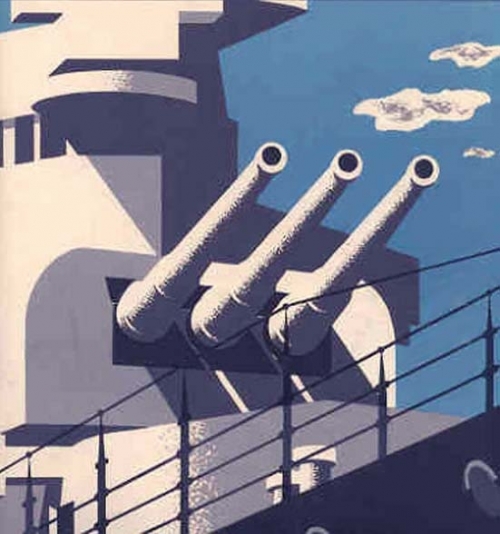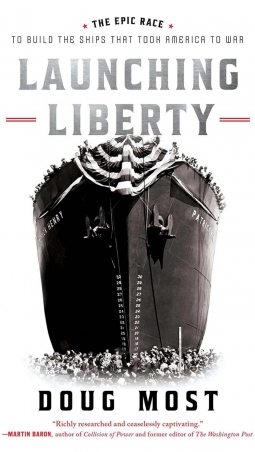World War Two - War at Sea
 - from Amazon:
 The attached article pertains to the amazing speed at which the U.S. Navy was able to add new fighting ships to the fleet between December, 1941 and December, 1942. Looking back from a point four months after VJ-Day, this anonymous journalist recalled the first six months of the Second World War, and how ill-prepared the U.S. Navy was to take on the two-ocean war. Throughout the course of World War II, there were three admirals who commanded to U.S. Atlantic Fleet: King, Ingersoll and Ingram. It was Admiral Jonas Ingram (1887 - 1952) who wrote the attached article about battle for the Atlantic:
"The Atlantic Fleet's record speaks for itself. Since the declaration of war we have escorted 16,760 ships across the Atlantic. Of these, less than a score were sunk in convoy...We know definitely that we sunk 126 U-boats..."
Click here to read a related article.
Frank Knox was FDR's Secretary of the Navy between 1940 through 1944. Arm and arm with his lieutenant, Under Secretary James Forrestal, the two men made good on the "Two-Ocean Navy Bill" passed by Congress during the summer of 1940:
"I am proud of this Navy of ours. Every American has a right to be proud of it, to know that it is, up to now, the greatest navy in history. But we cannot afford to be complacent about it. It is still not the navy that our country needs and that our fighting men in the ships deserve." "In the seven months since Pearl Harbor the aircraft carrier has replaced the battleship as the true capital ship of modern naval warfare. The carrier's rise to power reached a crushing climax in the battle of the Coral Sea and the Battle of Midway - the two most decisive naval engagements of the war thus far. Opposing fleets only struck at each other with bomber and torpedo planes and never fired a shot except in self-defense against aircraft."
Click here to read about FDR as Under-Secretary of the Navy.
|
MORE ARTICLES >>> PAGE: * 1 * 2 * 3 * 4 * 5 * 6 * 7 * > NEXT |
|